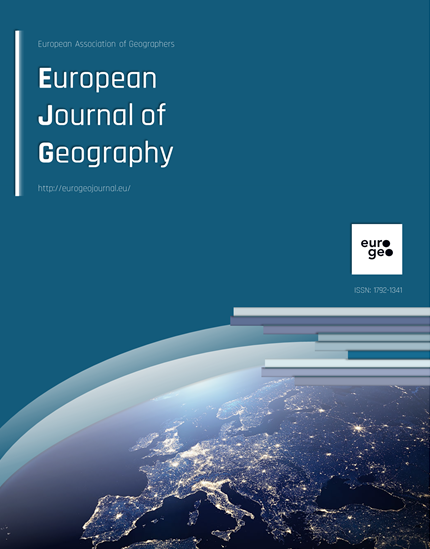Building a spatial decision support system for tourism and infrastructure planning: Τechnical solution and data integration challenges
Published 2022-03-22 — Updated on 2022-11-10
Versions
- 2022-11-10 (2)
- 2022-03-22 (1)
Keywords
- SDSS design,
- Mobility planning,
- Geodata portals,
- Destination planning
How to Cite
Copyright (c) 2022 European Journal of Geography

This work is licensed under a Creative Commons Attribution 4.0 International License.
Abstract
Mobility planning in rural areas with a high number of tourists is important for creating sustainable destinations. By identifying mobility gaps in the transportation system, measures to improve the situation can be implemented. In order to identify such mobility gaps, decision-makers need a spatial decision support system (SDSS). The aim of this paper is to identify vital aspects of creating such an SDSS and to build a prototype. Two important aspects were identified, data and system design. The result of the analysis of available data shows a lack of data portals with disaggregated socio-economic and intra-destination travel data. Further, it shows that data on points of interest (POI) and public transit data are primarily found in company databases. The system design analysis showed that most SDSS today are relying on public data and are not designed to integrate disparate data sources. They are primarily developed to be used by experts. Based on these findings an SDSS that automatically integrates both public and private data was developed. It comprises a self-hosted web mapping system and several geospatial tools. Our main conclusion is that both data and system design are important aspects to consider when building an SDSS for mobility planning. By using the architecture proposed in this article, new data can easily be incorporated in an SDSS. Furthermore, the system design also facilitates the involvement of stakeholders in the planning process.





